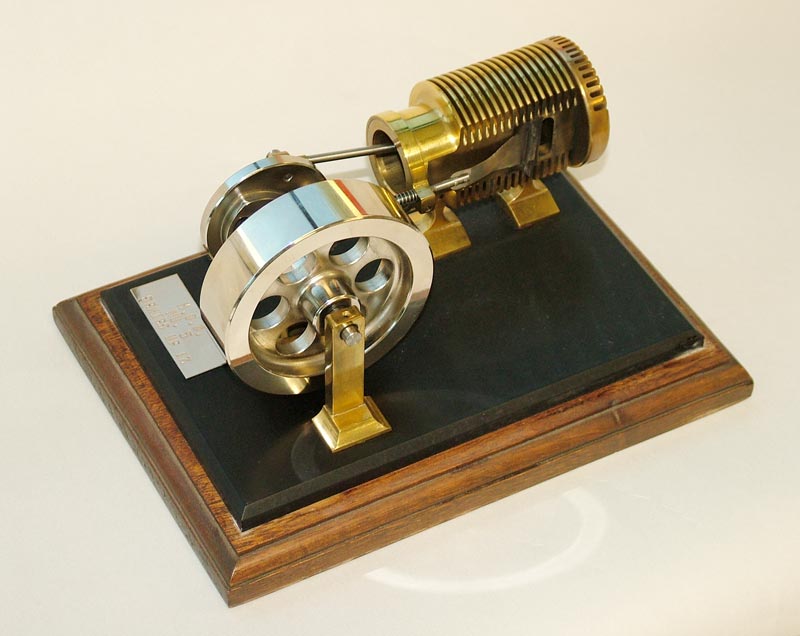This prototype Solar “flame licker” vacuum engine was made by M.G. “Woody” Woods, circa 1986. Twelve of these engines were built, with this one being the fifth. PM Research now sells a reproduction of this particular design called a Solar #3 engine, but this is one of the few originals by engine builder Woody Woods.
According to Stirlingengines.org.uk, a vacuum engine works as follows: “These engines work by drawing hot gasses or a flame into a cylinder to be cooled. Admission of the hot flame into the cylinder is controlled by a valve. There is a power stroke every revolution. On the outward stroke of the piston, the valve is open, and the flame is so drawn in to the cylinder. Just before the top of the stroke the valve is closed and the resulting drop in pressure draws back the piston, for the power stroke. One problem to be found running these engines is that of back-pressure at the end of the power stroke. The valve needs to be so constructed that it can lift and release any back-pressure. There have been a number of small power engines built, notably in Britain, but the vast amount of vacuum engines sold commercially have been as toys or models.”
Moving the flame closer to or farther from the valve opening adjusts the speed of the engine. As an added note, if you like steam and Stirling engines, check out our article on the work of Rudy Kouhoupt. Watch a YouTube video below showing the flame licker engine running.



